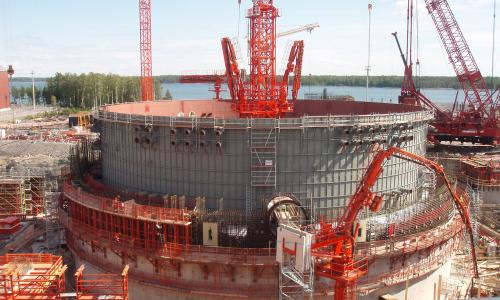Cheap dreams, expensive realities
In the dawn of the nuclear era, cost was expected to be one of the technology's advantages, not one of its drawbacks. The first chairman of the Atomic Energy Commission, Lewis Strauss, predicted in a 1954 speech that nuclear power would someday make electricity “too cheap to meter.”
A half century later, we have learned that nuclear power is, instead, too expensive to finance.
The first generation of nuclear power plants proved so costly to build that half of them were abandoned during construction. Those that were completed saw huge cost overruns, which were passed on to utility customers in the form of rate increases. By 1985, Forbes had labeled U.S. nuclear power "the largest managerial disaster in business history.”
The industry has failed to prove that things will be different this time around: soaring, uncertain costs continue to plague nuclear power in the 21st century. Between 2002 and 2008, for example, cost estimates for new nuclear plant construction rose from between $2 billion and $4 billion per unit to $9 billion per unit, according to a 2009 UCS report, while experience with new construction in Europe has seen costs continue to soar.
Financing and public risk
With this track record, it’s not surprising that nuclear power has failed to attract private-sector financing—so the industry has looked to government for subsidies, including loan guarantees, tax credits, and other forms of public support. And these subsidies have not been small: according to a 2011 UCS report, by some estimates they have cost taxpayers more than the market value of the power they helped generate.
When nuclear energy was an emerging technology, public support made some sense. But more than 50 years (and two public bailouts) after the opening of the first U.S. commercial nuclear plant, nuclear power is a mature industry that should be expected to stand on its own.
Instead, the industry has responded to escalating costs with escalating demands for government support. A 2009 UCS report estimated that taxpayers could be on the hook for anywhere from $360 billion to $1.6 trillion if then-current proposals for nuclear expansion were realized.
Cost vs. benefit
If we want to reduce the climate impact of electric power generation in the United States, there are less costly and risky ways to do it than expanding nuclear power. A 2011 UCS analysis of new nuclear projects in Florida and Georgia shows that the power provided by the new plants would be (more expensive per kilowatt than several alternatives)[https://www.ucsusa.org/nuclear_power/nuclear-power-and-our-energy-choices/nuclear-power-costs/nuclear-power-projects-risky.html], including energy efficiency measures, renewable energy sources such as biomass and wind, and new natural gas plants.
Public financing for energy alternatives should be focused on fostering innovation and achieving the largest possible reduction in heat-trapping emissions per dollar invested—not on promoting the growth of an industry that has repeatedly shown itself to be a highly risky investment.




